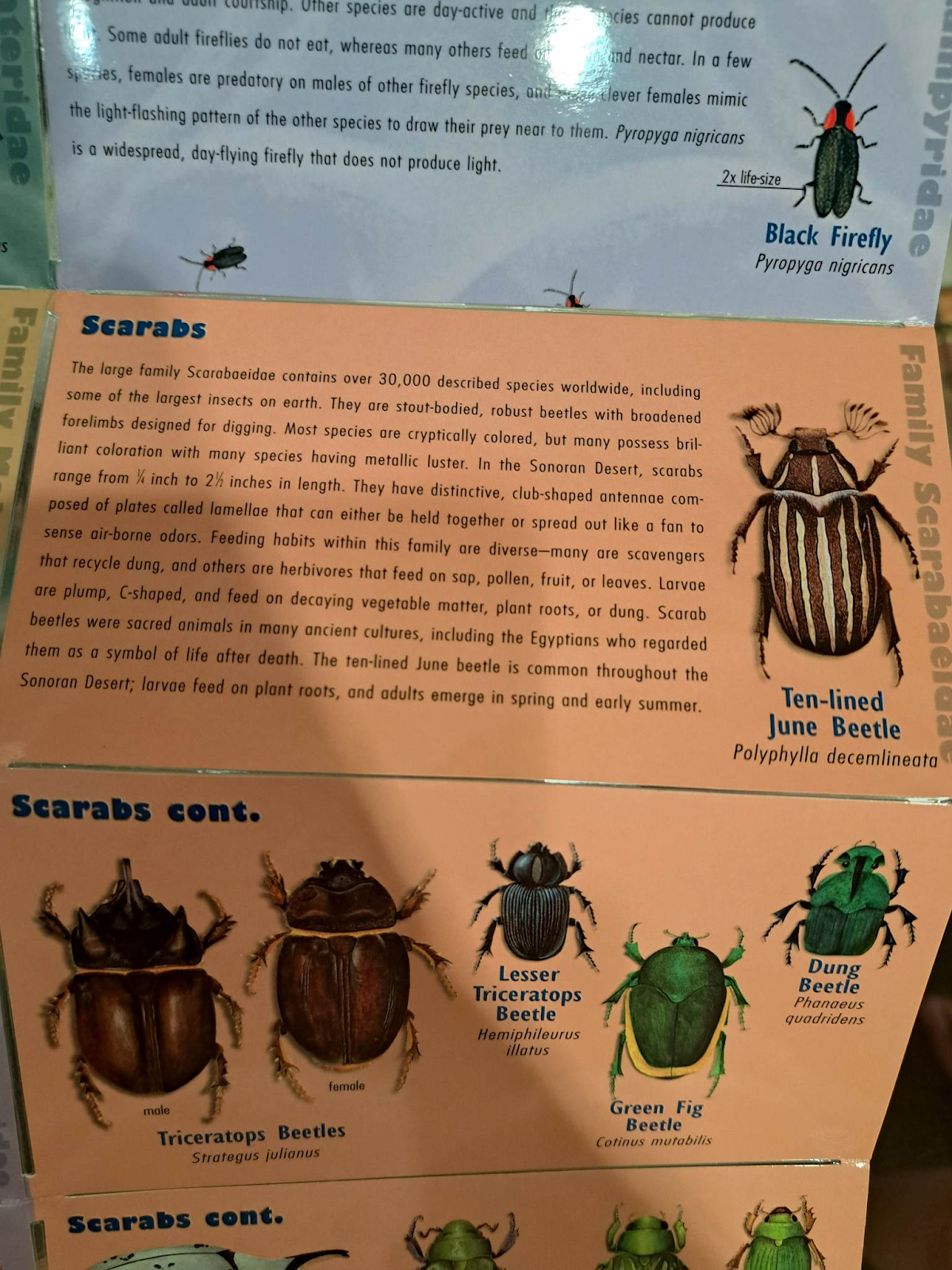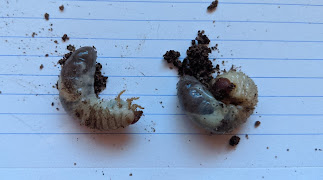Captivity Log
For about 3 years, I've lived and worked in an area of Phoenix where H. Illatus are common, although I grew up in the city and have never seen them anywhere else. Each year, a handful of them crawl into my house or office, and I can sometimes find them when I dig through my compost heap. I've kept them as pets and I think they're very cool so I'd like to give them the attention I think they deserve.
This is my effort to record details of the H. Illatus beetles I keep in captivity. My goal is to get some data about their behavior, lifespans, and life cycles.
July 2022: I had two adult beetles. I didn't record the exact date I found these two, but by this time I had them for no more than a few weeks. They were both from my backyard. I kept them in a 10' x 5' x 5' acrylic bug box. The box had about two inches of dirt and soil and a layer of moss.
I fed them several times a week, usually a strawberry top or a couple kernels of corn, and eventually 2-3 mealworms a week. I keep the mealworms live and cut them in half right before feeding. I misted every day or every other day and sometimes poured water on the moss.
October 2022: I left for a week and when I came back, unfortunately both beetles were dead. I fed them well before I left but their cage was very dry. I don't know what their lifespan is or how old these adults were but since they both died, I figure I underestimated how much humidity they needed.
October 17, 2022: I set up a new habitat for future beetles in a 11' x 7' x 14' fish tank. I put 3 inches of dirt from my backyard with some plants that grow there too, like oxalis and other weeds. I added some soil, moss, a couple rocks, and some sticks and moss poles even though I don't think they're big climbers. I run a humidifier in the same room a few times a week and I have a meter to help me keep track of humidity.
That same day, I found two larvae in my compost pile and I believe they are H. Illatus. I took a big scoop of soil/compost from where I found them and put it in the tank with the larvae. They burrowed and are no longer visible. With my previous larvae, I kept them each in an individual jar so I was able to check on them a few times, but that won't really be possible with these so I hope they do well. I'd guess they are in their final instar judging by their size, but who knows. One is smaller than the other so may be an earlier instar. My adult beetles came to the surface to eat but I'm not sure about the larvae will do that, or if they need to. I'll put some food on top of the soil where they burrowed.
Both times I've found H. Illatus larvae in my backyard, they've been in pairs. The first time, my husband found them when I wasn't home so it's possible he missed some. This time, when I scooped up these two I went through the surrounding soil and didn't find any more.
November 16, 2022: I got impatient and dug around in my tank to see if I could find the larvae. I found one of them at about 2 inches depth. It looked good as far as I can tell. I reburied it and didn't continue looking for the other.
They haven't eaten any of the food I've left on the surface of the soil so like I thought, larvae don't come up to feed like the adults do. I spray every day to keep the tank at 60%-70% humidity, and the temperature is around 72 degrees.
April 3, 2023: I found two more larvae in the compost heap and put them in separate containers that I can more easily dump out without risk of injuring the larvae, pupae, or adult beetles. This is the third time I've found the larvae in pairs. They are within a few inches of each other and I have never found any more when digging around in the surrounding dirt.
I have not dug up the previous pair again and have not seen any evidence of them. I keep the tank humid but assumed they might have died. However since I found this pair I have a little more hope that it's still within their normal pupation range. On iNaturalist, they're observed most frequently in August. I wondered if that was when pupae hatch or when their mating season is, or both; since it's April now, I hope the ones I have now will pupate and emerge in the next few months.
April 25, 2023: I took out one of the April 3 larvae with the intent to experiment with keeping it in a substrate of mostly polyacrylamide water beads, but found it had pupated. I checked on the other and it had also.
I dumped all the soil from the tank with the October larvae, and unfortunately found no evidence of them, so they most likely died before pupating and completely broke down. The top layer of soil was damp but below that, it was dry. I had hoped to recreate their natural environment more closely, but without a cover on the tank I just didn't keep it humid enough. Future larvae will be kept in smaller individual containers with vented lids.
As for the April larvae, now pupae: I put one in a plastic 16 oz deli container with a mesh lid, and the original substrate from both smaller containers the larvae were in. The other pupa I went ahead and put in the water beads. For larvae, I thought this could show me what depth they preferred to be at and how active they were, but for pupae I hope this will let me remove it to photograph it every day without risking injury to it by digging around for it. I'm not sure yet if this is a survivable substrate for them so this is an experiment.
June 17, 2023: One of the April 3 larvae survived to adulthood, details in the Larvae and Pupae post. The female, Beetle B or BB, has had an eventful life so far involving two escapes. I was lucky to find her in my house both times and have put her in a taller container.
Last night, I weighed BB in at 0.81g, then put her in a small glass bowl where I usually feed her. She has eaten boiled corn, avocado, and boiled egg. Tonight, I put two live mealworms in the bowl and left her overnight. Some of the only literature I've ever found on these beetles, this 'Killer Phileurini' article from 2007, indicates they may be active predators rather than just scavengers. Even the Bugs in Cyberspace listing says they want protein and "will tear other bugs apart to get it."
When I came back this morning, the mealworms were still alive and unharmed. I cut one of the mealworms and put it back, along with a chunk of banana. She immediately started eating the cut mealworm, eating the insides and leaving the exoskeleton. BB continued until about 30% was left, then she moved onto the banana. She ate for about 2.5 hours, slowly but without pause. When she moved away from the remaining banana, I weighed her in at 0.86g, a 6% increase in bodyweight.
This reinforces what I'd noticed before without recording it, that the beetles prefer protein and will eat it before any other available foods. Bugs in Cyberspace also said they eat carrion, so I plan to provide some cooked unseasoned meat soon.
As far as the lack of predation, this seems to establish they're not predators but I'll keep testing it. Possibly BB wasn't hungry enough, or healthy mealworms aren't their preferred targets.


Comments
Post a Comment